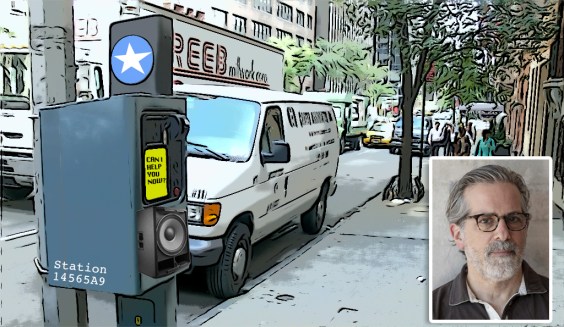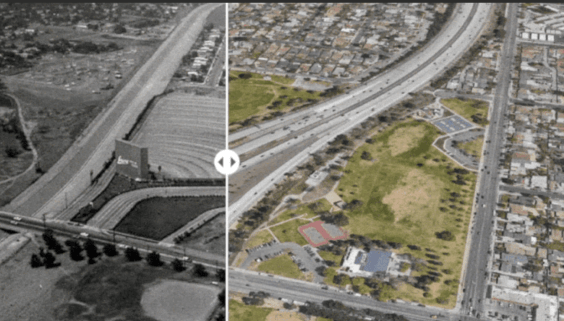Editor's note: this article first appeared on the U.S. PIRG blog and is republished with permission.
In my first ever college class one of my professors used the term "biophilia." At the time, I had no idea what it meant, but as he described the feeling you get when you take the time to be out in nature enjoying the sunlight, plants and animals around you it all started to make sense. Biophilia in its most basic sense is the desire that we as humans feel to experience and connect with the living natural world around us. Since I first heard the term, I’ve realized that the time where I feel the most connected to the natural world around me is when I take leisurely strolls outdoors.
For me, walking has become more than just a way to get around. Walking around in my neighborhood is a great way for me to relieve stress and enjoy natural spaces. Not everyone, however, can experience the natural benefits of walking and biking — either as stress relief or, importantly, as safe and affordable ways to get where they need to go. Cities and towns should look to increase their walking and biking infrastructure to make it safer for everyone to enjoy cleaner air, quieter neighborhoods and safer streets.
The bipartisan infrastructure bill, passed by the Senate in August, presents a great opportunity to make our towns and cities more walkable. However, we still need to ensure that the money is used for building better pedestrian and bike infrastructure instead of wasted on highway expansion projects, which would likely do more harm than good.
Today, transportation is the leading source of climate change emissions in the nation. Nearly 60% of transportation emissions come from light-duty vehicles (everyday cars and trucks). An estimated 58,000 American lives are cut short every year due to air pollution, the result of our system being built around fossil fuel-powered vehicles.
In addition to its negative health and environmental effects, our transportation system's reliance on cars also presents problems such as increased roadway congestion and auto debt which makes people spend additional time and money on transportation-related expenses. According to PIRG’s Driving Into Debt report, auto debt has grown 75% between 2009 and 2021. Americans now owe over $1.2 trillion on auto loans. With jobs, food, and other necessities too often inaccessible without a personal car, consumers are forced into debt just to get to and from the places they need to go.
Despite these issues, federal transportation spending too often goes towards wasteful and destructive highway expansion projects. Some may argue that this practice will relieve roadway congestion, but decades of evidence from American cities shows the truth. Cities that have expanded highways are still stuck in gridlock because highway expansion doesn’t work to relieve congestion. As a result, we should strive to use the incoming federal funding on solutions that would positively address transportation problems without severely burdening communities and exacerbating our problems.
We already know how to do this: by investing in walking and biking infrastructure, as well as by prioritizing the repair of existing roads and bridges over new road construction. Investing in pedestrian safety and biking infrastructure will give consumers alternative transportation options and will reduce total vehicle miles traveled, leading to significant savings and public health and environmental benefits. For example, one study in Madison and Milwaukee, Wisconsin found that replacing 20% of total short car trips with bicycle trips would prevent close to 60,000 tons of CO2 from being released each year — at an estimated yearly economic benefit of about $1.2 million for the two cities.
Repairing existing infrastructure is another simple way to make our transportation system safer. Pairing repair and pedestrian infrastructure investments together could lead to significantly less roadway congestion with less hazards and less vehicles on the road.
The federal infrastructure bill could be used as a major asset toward creating a more walkable and bikeable transportation system. One way states can ensure that they can get the most funding from the bill is to apply for an active transportation grant. These grants can be used to help fund “complete streets” projects that will make walking and biking more accessible. These projects include things such as protected bike lanes, sidewalk expansion and traffic calming infrastructure.
States best equipped to receive these competitive grants should commit existing funds toward matching the grants. A municipality's ability to provide matching funds is one piece of criteria by which the federal government will choose who to award the grants. As a result, we should all call upon our elected officials to stop wasting money on highway expansion projects and use it to attract federal grants that can help create walkable and bikeable streets for everyone.
With big federal funding incoming, we have the opportunity to address many of these issues in our transportation system. We have the option to continue on a reckless path of highway expansion that harms our health, the environment and our wallets, or we can chart a new course and help secure a cleaner, healthier and more accessible transportation system for all Americans.
Everyone deserves to experience the benefits that living in a walkable and bikeable community can provide. Therefore, it is imperative that we all call on our legislators to use the incoming federal funding to make investments in complete streets infrastructure. If we use this funding correctly, we have the ability to empower people to walk and bike, as well as repair our existing roadways to make our entire transportation system safer.
Ryan Giunta leads the Drive Less, Live More campaign at U.S. PIRG, which focuses on reimagining our transportation systems to make them safer, more convenient and more environmentally friendly. He lives with his family just outside of Boston, where he enjoys running, watching sports and snowboarding.






